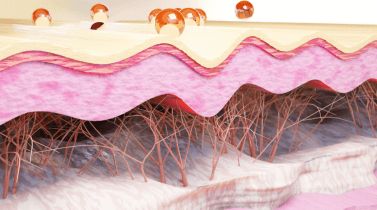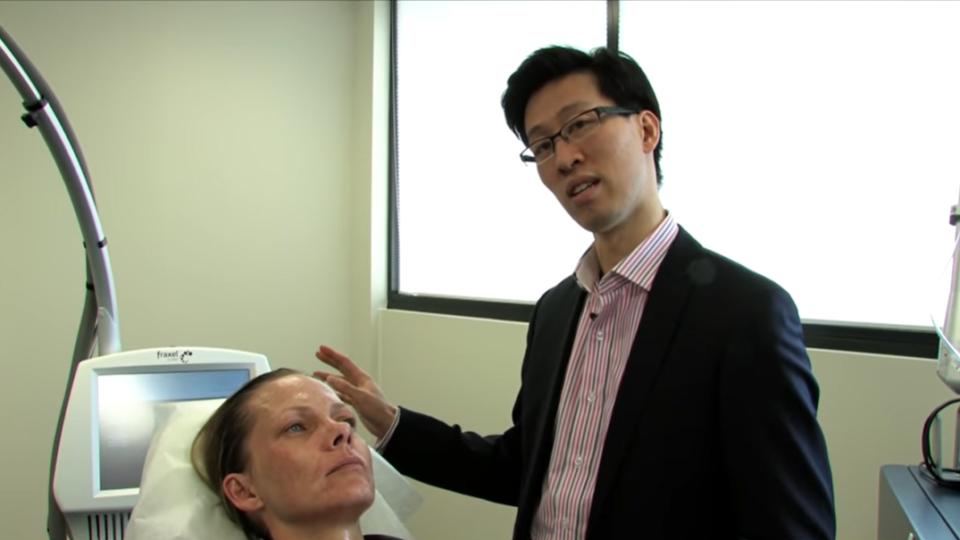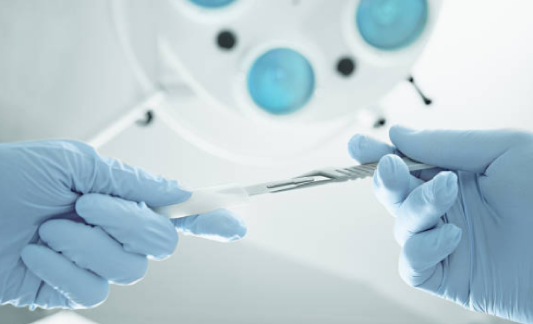How To Improve Skin Elasticity
It is natural to experience the loss of skin elasticity as you age. Collagen and elastin production slows down the older we get, preventing our skin from bouncing back into place like it once did.
Although it is normal to experience loose skin and the appearance of wrinkles as time goes on, there are things you can do to help improve the elasticity over time. With just a little time and patience, you can enjoy firmer skin and the reduction of fine lines.
Keep reading to find out more on how to improve elasticity of your skin and overall skin health.
What is skin elasticity?
Skin elasticity refers to your skin’s ability to bounce back to its original position when pushed or stretched. Your skin is able to do this due to the combined efforts of collagen and elastin fibres found within and underneath the dermal layer.
Collagen is a supportive and fibrous protein found in multiple areas of the body, including tendons, bones, ligaments, and the skin. Sufficient levels of collagen production grant firm skin and support the skin’s connective tissue. Without enough collagen, you are likely to face various skin concerns such as sagging skin, wrinkling, and dehydration.
Elastin is a fibrous protein that oversees the level of your skin’s elasticity, as well as the stretch of other tissues and organs. The production of elastin is a natural process within the body, but it is further supported by a well-balanced diet. Without sufficient amounts of elastin fibres, the skin is prone to sagging or developing fine lines and wrinkles.
Skin naturally loses both collagen and elastin as it ages, but other life events may cause a drop in the fibres’ production levels. Poor eating habits, environmental factors, and sudden changes to your hormones are just a few examples of what can cause the loss of skin elasticity.
Why is skin elasticity important?
Maintaining skin elasticity is one of the most significant forms of skin care you can perform to prevent the signs of ageing. Without proper care towards stimulating collagen production and the continuation of elastin production, you are more likely to experience sagging skin and creases across your face and body. This can speed up the signs of ageing and leave your skin texture both looking and feeling rough.
The effects of losing skin elasticity go deeper than the skin. The reduction in elastin and collagen production means that your internal organs, such as heart valves and blood vessels, can no longer stretch easily or bounce back into shape. For those whose increased loss of skin elasticity is caused by smoking, this inability of the body to restore its original shape can cause numerous health problems in the heart, lungs, and body tissue.
What causes skin to lose elasticity?
There are multiple factors within daily life and our habits that can cause the loss of skin elasticity. The reduction of skin cell turnover and the skin’s connective tissues may sometimes be due to natural circumstances, but personal habits and external factors can also speed up the process.
Ageing
It is natural for the skin to lose its concentrations of elastin and collagen as you age. The structural integrity of skin also begins to reduce over time alongside its growth factors. The loss of these natural features makes it more difficult for the skin to heal from any damage, while also causing it to grow thin, fragile, and incapable of bouncing back.
Smoking
The habit of smoking cigarettes has been clinically proven to damage skin and be toxic to skin cells.
Overall skin elasticity is one of the notable forms of damage that come from smoking, with the thickness of the topmost layers of skin thinning out and wrinkling prematurely. On top of this, smoking discolours skin tone, heightening the signs of premature ageing.
UV exposure
While spending some time in the sun is the best means of giving your skin vital amounts of Vitamin C, constant exposure to UV rays can also break down elastin and collagen within the skin. These harsh rays are also known to damage skin cells, preventing the skin from healing itself.
Over time, too much sun exposure appears as a leathery skin texture, wrinkles, liver spots, scaly patches known as actinic keratosis, and yellow discolouration from solar elastosis. Collectively, these conditions make an affected person look older than they are and can be difficult to recover from without proper care.
Fortunately, you can reverse sun damage over time with the right kind of skin care treatment. Topical treatments such as vitamin A serums, exfoliators, or vitamin C serums can encourage the turnover of new skin cells. Combining them with professional treatments such as chemical peels is the best means of improving sun damage.
Poor diet
Having an unbalanced diet, especially one with high amounts of sugar, can cause the process of ageing to significantly speed up. This is because your diet is the main way that your body absorbs energy and nutrients, which in turn is used to boost the skin’s health.
Skin cells are often harmed by free radicals from the environment and within the skin, particularly in the form of oxidative stress, which is where your internal antioxidant levels are low. Foods such as fruits and vegetables are high in antioxidants and can be consumed to combat the premature ageing effects of free radicals. Without this balanced diet, your skin is more likely to show early signs of wrinkles, dark spots and sagging.
Hormonal changes
While there are many controllable factors that affect skin elasticity, there are others that naturally occur without much prior notice. Hormonal changes are one such factor, the skin losing elasticity when certain hormones within the body suddenly drop in levels.
An example of this is during menopause, where the sudden drop in oestrogen levels also triggers a reduction in collagen production. Studies have shown that women typically lose almost 30% of their skin’s collagen within the first five years of menopause, and an additional 2% every year after that. This speeds up the process of ageing, with excess skin and fine lines forming from the loss of elasticity.
Environmental factors
Certain factors that are naturally encountered during daily life can impact the skin’s elasticity and cause it to lose shape. Some of the more common ones include:
- Extreme temperatures: Cold weather with dry air can dehydrate the skin, causing the elastin and collagen levels to drop. This dehydration can also occur during hot weather, leading to cracking, deeper lines, and dark spots forming on the skin.
- Air pollution: Vehicles and cities alike can cause large particles of pollution to spread through the air. This air pollution can irritate the skin’s barrier and affect its appearance by causing pigmentation issues like age spots. It also encourages the process of ageing, reducing the production of new collagen and skin rejuvenation.
Signs of decreased skin elasticity
It is vital to be aware of what signs indicate a loss of skin elasticity. That way, you know exactly when to start taking steps to improve skin elasticity and its overall health.
The most common signs of decreased skin elasticity include:
- Fine lines and wrinkles: As the skin loses elastin and collagen, fine lines and wrinkles become apparent on the face. Especially around areas such as the mouth, nose, eyes, and forehead.
- Thinning skin: Skin with lower levels of collagen and elastin will feel thinner and be more prone to tearing.
- Loss of radiance: Skin elasticity is closely tied to the skin’s overall health, which is why reduced elasticity can cause the skin to look dull.
- Loose skin: Over time, the skin loosens from an inefficient amount of collagen and elastin production. This can cause it to sag in areas such as the neck and jowls, blurring the definition of these areas. Sagging skin will also not bounce back into place so easily when pulled or pinched.
- Change in texture: Skin that is losing elasticity will feel less firm to the touch. Instead, it will feel lax and often rough from dehydration.
- Visible cellulite and/or stretch marks: When skin is stretched beyond its capacity, which becomes more common as elasticity is lost, stretch marks can be left behind. This decreased elasticity can also make cellulite more noticeable as the skin cannot maintain its even texture.
In the case that you notice any of these signs occurring on your skin, you may be experiencing a loss of elasticity. If you are wondering how to restore collagen in the face or body, there are plenty of proactive measures you can take.
How to improve skin elasticity
To help keep the skin firm and supple, even against ageing and the presence of external factors, there are numerous changes you can make to your life. By taking basic steps to improve your overall well-being, you can enhance your skin’s elasticity levels.
If that is not enough, various skin care products and non-surgical treatments can help encourage elastin and collagen production. Combining these methods can stimulate collagen production and keep your skin glowing in health.
Lifestyle factors
Improving skin elasticity is possible by taking simple steps in your everyday life. Working to restore skin hydration, thickness, and overall health can in turn promote collagen production and result in good skin elasticity.
Discussing your skin’s health with a skin care professional or doctor can help you determine which areas of your lifestyle you need to work on. From there, it is a matter of time and effort before you have successfully improved skin elasticity throughout your face and body.
Diet
A balanced diet, full of antioxidant-rich foods, can prevent the ageing effects of free radicals such as skin laxity. Try foods such as:
- Oranges
- Walnuts
- Broccoli
- Berries
- Kale
- Pecans
Avoiding eating too much sugar and processed foods can also prevent your skin from being further damaged. Excessive amounts can cause glycation, which in turn creates deep wrinkles, thinner skin, and sagging jowls.
Exercise
Taking the time to complete physical exercise can stimulate the metabolism of your skin cells and keep you looking fresh. In turn, the increased blood flow aids in maintaining skin elasticity and your overall health.
Supplements
Collagen supplements are believed to restore elasticity and overall firmness in the skin when taken over a period of time. However, these results are typically seen when collagen supplements are used alongside other beneficial skin care ingredients.
Hydration
Hydrated skin is skin that has high levels of elasticity and appears bright in complexion. This is because skin cells with insufficient amounts of water cause the topmost skin layer to become dry and fragile. In turn, fine lines and wrinkles are more likely to appear due to this level of dryness.
Try drinking at least eight glasses of water per day, and maintain a healthy diet. On top of that, use a hydrating moisturiser every morning and night to retain the necessary water within the skin’s barrier.
Sleep
It is while you are asleep that the body undergoes its regenerative process. This includes restoring elastin and collagen fibres, which prevent your skin from sagging.
Always try to get around 7-9 hours of sleep every night, the optimal amount of time for any adult. Otherwise, your regenerative process will not be fully completed come morning.
Non-surgical skin treatments
You can greatly improve skin elasticity by electing to use non-surgical skin treatments. These methods go deeper than dermal collagen and elastin, aiming to tighten the skin on multiple layers.
These efforts remain non-invasive, yet still encourage the production of both fibres for greater skin appearance, thickness, texture, and elasticity.
Bio stimulators
Bio stimulators, otherwise known as collagen-stimulating injections, trigger the body’s collagen production when levels are too low. By encouraging the production of more collagen, the skin can experience more firmness, better texture, and an overall smoother appearance that can last for several months.
With this skin treatment only requiring an additional injection every year or so to maintain natural elasticity, bio stimulators are a simplified procedure for maintaining skin elasticity.
Bio-remodelling
One of the latest methods in anti-ageing treatment, bio-remodelling injections help to remodel ageing, thin, or sagging skin. It works in the dermal layers to stimulate collagen and elastin across multiple layers of skin.
By supporting the skin layers, the injected areas gain additional firmness and thus smooth out signs of ageing like wrinkles. However, they still differ from dermal fillers as bio-remodelling injections do not add volume to the skin. Rather, it encourages the body and face to take these improvement steps on their own.
Rejuran
A newer take on the collagen stimulation injectables of bio stimulators, Rejuran uses Polynucleotides, chains of amino acids and hyaluronic acid to hydrate and plump out the skin. This is not just done by promoting the production of more collagen. Rather, Rejuran also hydrates the skin and reduces the appearance of blemishes like acne scars or textural changes. It also slows down the overall ageing process, treating fine lines and wrinkles directly to improve skin quality.
IPL
Intense Pulsed Light (IPL) rejuvenation does not require the use of injectables in order to encourage collagen and elastin growth factors. Instead, IPL light energy is directed into the required areas to alleviate various skin conditions. This includes hyperpigmentation, lack of skin thickness, laxity, and wrinkles.
The application of both heat and light does more than encourage the production of both vital fibres. It also stimulates the skin’s natural healing process, supporting your appearance even as you age. This keeps your skin firm and strong against the passage of time.
RF needling
Combining the methods of both radiofrequency (RF) and microneedling, RF needling promotes skin tightening from the deepest layers of the skin. By going this deep, this skin treatment can improve various skin conditions, including acne scarring, thin skin, oversized pores, as well as fine lines and wrinkles.
Collagen is also stimulated by RF needling and its usage of both needling and heat production. Collagen fibres are shrunk and tightened to generate this stimulation, while the skin is encouraged to repair itself at a faster rate which ultimately improves skin elasticity.
Skin care
Basic self-care for your skin can build a strong foundation to improve skin elasticity across your face and body. Ensuring you regularly exfoliate, can encourage the growth of new skin cells, while hydrating products can speed up the skin tightening process.
Seeking skin care products with ingredients that are known to improve skin elasticity is also vital to the process. There are several ingredients and product types that offer improvements to the skin’s level of tightness and elasticity:
Hyaluronic acid
This naturally occurring substance can be found in the skin’s connective tissue to keep the skin hydrated. Overexposure to UV rays and the general run of time can cause this substance to deplete, meaning that skin care products containing hyaluronic acid should be used to restore internal levels. This way, the skin’s ability to bounce back can return.
Sunscreen
Excessive sun exposure can damage the skin over time, speeding up the signs of premature ageing, including skin laxity. However, regularly applied sun protection, such as broad-spectrum sunscreen, can prevent this damage from occurring. Thus, maintaining the optimal levels of elastin and collagen.
Vitamin A
The essential nutrient of vitamin A is known to support various aspects of the body, including the skin. Most vitamin A skin care can be applied topically to the skin for stimulating collagen and removing damaged elastin fibres.
This, along with the reduction of hyperpigmentation and skin damage, alleviates the skin from premature signs of ageing.
Vitamin C
It has been noted that vitamin C offers several benefits to the skin, including the restoration of its elasticity. Regularly applying vitamin C skin care products promotes collagen growth factors and tightens the skin.
How long does it take for skin to regain lost elasticity?
With careful treatment on a regular basis, most skin types can restore to their original state of elasticity in time. This restoration can be sped up by following the steps outlined in this article to improve skin elasticity.
Do not rush yourself to finish the restoration process as soon as possible. It is with time, patience, and the guidance of a skin care professional, you can improve skin elasticity and maintain it well into the future.
Where to treat skin elasticity in Melbourne?
When looking into how to improve skin elasticity, it is best for you and your skin to follow the professional advice of Skin Therapist, Nurse or Doctor.
Victorian Cosmetic Institute is home to numerous skilled practitioners who can offer many treatment options to treat your skin. With over a decade of experience and leading skin treatment technologies, your skin’s elasticity is in capable hands.
Tailor your skin elasticity treatment by booking online or giving us a call today at 1300 863 824.


